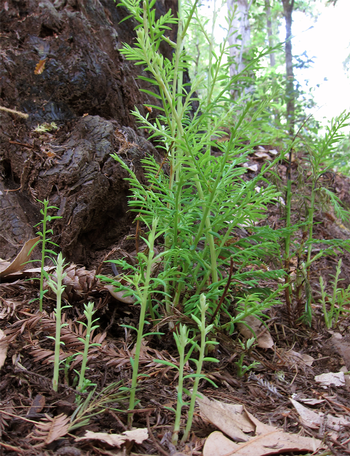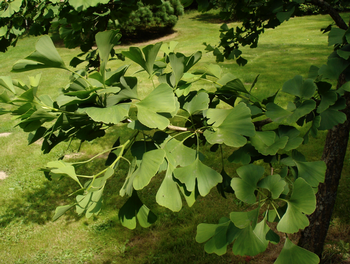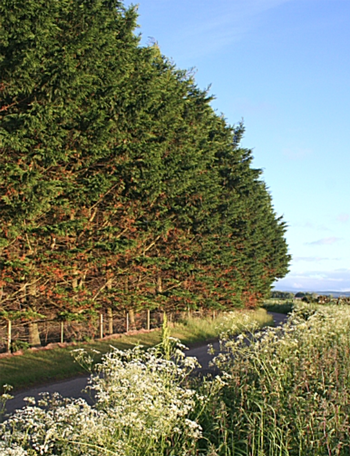Pruning your conifers
-
Dot Zanotti Ingels
-
Generally speaking, Conifers are trees and shrubs with needles that set seeds in cones. Yews, junipers, and ginkgos produce cones, too, but they're fleshy and appear berry-like. Ginkgos are broad-leaved conifers. Part of their charm is that conifers are pretty low-maintenance plants.
 Redwoods like these seen at Big Basin can sprout from dormant buds at the base of the tree. Photo: Milton Taam
Redwoods like these seen at Big Basin can sprout from dormant buds at the base of the tree. Photo: Milton TaamMost conifers require minimal pruning and will perform well in your landscape without your intervention. Do not hesitate to get out your pruning tools when you see dead or diseased branches. Leaving these on a tree or shrub allows disease pathogens and insects to enter and should be promptly removed.
Conifers can be pruned into various shapes and sizes, but for most of us, pruning for health and structure or pathway clearance will typically be the focus of our efforts. Conifers make great formal or informal hedges. When you shear any conifer hedge, remember to leave the bottom of the plants a bit wider than the tops to get light to the lower limbs.
Before getting started, ask yourself, "Why do I want to prune this conifer?" and "Which conifer is this?" Most Conifers do not replace growth like other trees and shrubs, so you must have a clear purpose before making a single cut.
There are many types of conifers, and the differences in their growth patterns will affect when and how you prune a conifer.- Form: If you want your conifers to have a pyramidal form, consider removing or subduing any laterals that challenge the leader. A strong, single leader dominates and suppresses the growth of other shoots.
 Gingkos are broad-leaved conifers. Photo: JL Staub
Gingkos are broad-leaved conifers. Photo: JL Staub - Size control: Always plant the right plant in the right place, but sometimes a tree grows larger than anticipated and threatens other plants or structures.
- Health: Always remove dead, diseased, or damaged branches. Removing branches that cross and could potentially rub against each other is important to avoid injuries that become an entry point for disease.
- Rehabilitation: Most conifers do not resprout if you cut back to the base. However, it is possible to rehabilitate an unsightly conifer with careful planning.
Ready to give it a go?
- Most Pines have buds at the tip of the current season's growth, not on the stems. Prune pines in the spring when you can cut or pinch the soft new growth, called candles before the needles are fully elongated. Buds will develop from needle sheaths below the cut. Some, like Canary Island pines, will sprout from branches or even the trunk if a limb dies or is removed, so be sure to know your species. These are best pruned during cold winter weather.
 Conifers make wonderful formal or informal hedges but they may need to be pruned for height. Photo: Anne Burgess
Conifers make wonderful formal or informal hedges but they may need to be pruned for height. Photo: Anne Burgess - Firs, cedars, and spruce also bud along the current season's growth, but on the stems. Prune these species back to the bud before the current year's growth hardens.
- Yews and hemlocks will bud on both old and new wood. When you cut the wood abovea bud, the bud will develop into a twig. Pruning in the spring, just before the new growth begins, allows new growth to cover the pruning cuts.
- Juniper and arborvitae have buds present only where there are green leaves. Prolonged use of electric hedge shears on juniper and arborvitae hedges can result in a minimal layer of needles just on the outer surface of the plants. If part of a continually sheared plant dies or is cut back too far, there are no inner leaf buds to develop, leaving a "hole" in your hedge.
- Redwoods sprout from dormant buds. Often, these buds are concentrated and sprout near the tree's base. However, these dormant buds can exist throughout the tree's stem and branches. Redwoods need little to no pruning if appropriately sited. If you must prune a Redwood, consider shortening longer branches rather than pruning them back to the trunk. Redwoods can send out new sprouts at the ends of stubbed branches. Topping Redwoods is not recommended.



